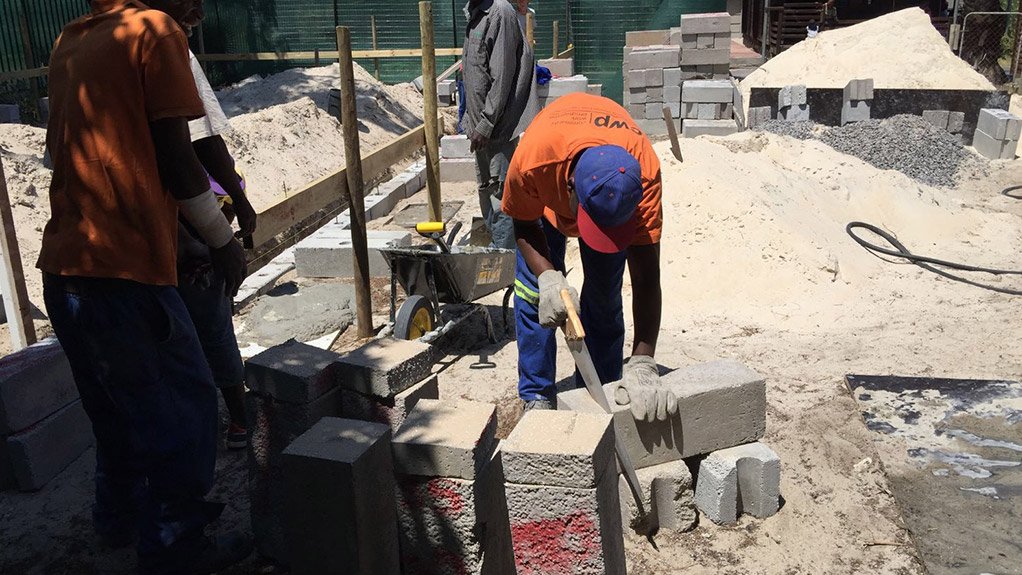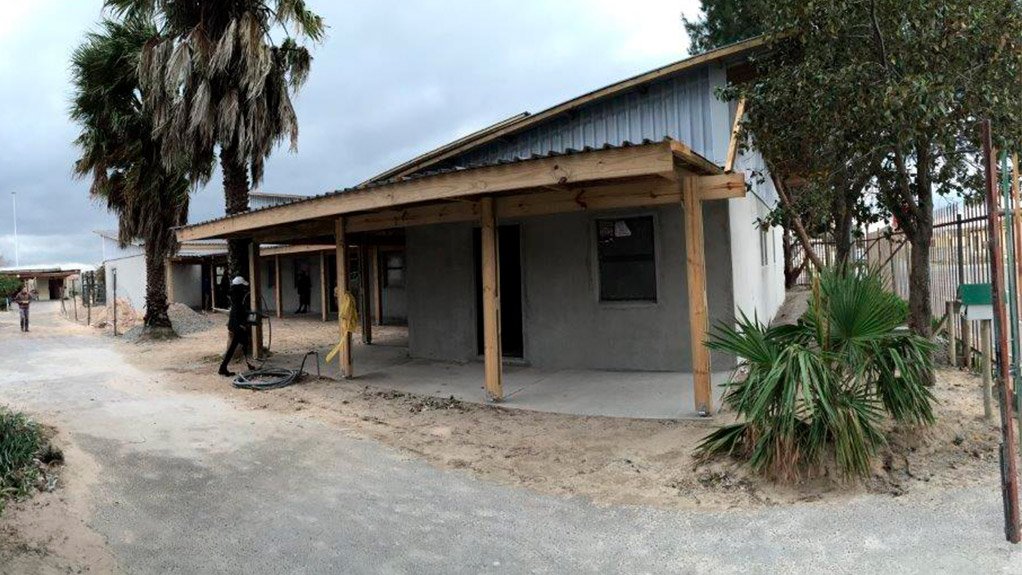- Selcrete (0.04 MB)
/ MEDIA STATEMENT / This content is not written by Creamer Media, but is a supplied media statement.
South Africa's housing shortage may be solved faster, cheaper, and environmentally friendlier. By mixing cement with polystyrene, and an additive – a technique that is widely used in Scandinavia and northern Europe – Selcrete wants to do just that. The company's pilot project, phase one of a revamped day care in the township of Khayelitsha, opens its doors next week Thursday.
One of the problems at Noluthando day care centre, which cares for over 265 children aged 2 months to 6 six years, is that its timber structures don't offer adequate protection against the summer heat, cold winters, and fires. “For phase 1, we have helped build a small utility hall, an administration block, and a starter kindergarten classroom using our product, blocks that are made of cement, expanded polystyrene beads, water, and a binding agent,” says Graeme Horwood, Selcrete's CEO. “Twelve new structures will be built in total.”
Better protection against fires, to which the densely populated township is prone, and superior insulation are two main improvements at Noluthando, Horwood says. “Selcrete makes a building 2 to 3 times more insulated compared to structures made of bricks and mortar. It offers better protection against fires and fungus too,” he says. The product is therefore very suitable for South Africa's cold and often wet winters and hot summers. “Selcrete is inspired by techniques used in Norway, a country where the weather conditions are even more extreme. If it works there, it works everywhere.”
Noluthando might be the first, it certainly isn't the last Selcrete project. “We are negotiating a number of commercial and residential projects in Gauteng, KwaZulu Natal, and the Western Cape. In Knysna, we are currently building an upmarket residence. On behalf of Rotary for the Knysna Educational Trust, we are working on a social responsibility re-build in Khayalethu, a township near Knysna,” says Horwood.
What makes Selcrete interesting for the South African market is that projects can be realised much faster, in over half the time of conventional homes. This could translate to a 25% cost reduction, Horwood says. “It is an attractive solution for budget-conscious projects like Noluthando, or even the low-cost housing sector, where quality, affordability, and time efficiency are very important factors. Delivery of low-cost homes in South Africa needs to take place, and quickly too,” he continues, referring to Stats SA latest General Household Survey.
Published in April this year, the report suggests that 13.1% of South Africans live in informal settlements. “We can deliver better quality homes, and other buildings too, more efficiently and cost-competitively whilst being better for the environment.”
Selcrete is a greener product compared to most others, for instance due to the use of recycled polystyrene. “Because our blocks are made on site, they don't have to be transported which saves energy and minimises carbon emissions too,” he says, adding that better insulation means that Selcrete buildings require less energy for heating and cooling. “This has a positive impact on carbon emissions, but also on people's financial situation,” Horwood says, noting that low income households typically spend more of their income on electricity than mid or high-income households.
Mavis Mbaba, who founded Noluthando twenty two years ago when she opened her home to 45 children who needed to be cared for whilst their parents were at work, is excited by the improvements to her day care centre. She says: “These new buildings mean everything to me, and they will change everything at Noluthando. From now on, the children can do activities in a safe environment, without the risk of fires. Fires are a risk when working in a wooden building. These new buildings don't require as much maintenance as the wooden ones. Maintenance costs a lot of money. So yes, I am very very happy."
Edited by: Creamer Media Reporter
EMAIL THIS ARTICLE SAVE THIS ARTICLE
To subscribe email subscriptions@creamermedia.co.za or click here
To advertise email advertising@creamermedia.co.za or click here















